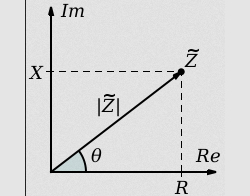The output from most electronic devices in an audio system will be of low impedance in nature, usually 150 Ohms or less.
However, the output from many passive devices, such as a high impedance microphone or passive guitar pickup can have much greater output impedance.
What’s the difference and why is it important to know how to deal with these signals in an audio system?
Impedance (Z) is the measure of the total opposition to current flow in an alternating current circuit.
It is made up of the sum of two components, resistance (R) and reactance (X).
Z = R + X
Resistance is essentially constant at all frequencies in an audio circuit and is measured in Ohms.
Reactance is the measure of opposition to the flow of alternating current caused by the effects of inductance and capacitance in a circuit. It is also measured in Ohms but it will vary with frequency.
The following formula for inductive reactance illustrates how its opposition to current flow increases as the frequency and/or the amount of inductance increases:
where F = the frequency in Hertz (cycles per second) and L = the inductance in Henrys.
The following formula for capacitive reactance illustrates how its opposition to current flow decreases as the frequency and/or capacitance increases:
where F = the frequency in Hertz and C = the capacitance in Farads.
These formulas also point out the fact that a specified impedance for an audio device is only going to be valid for a single frequency—the actual operating impedance will vary greatly over the audio frequency spectrum.
The Low Vs High Difference
A high impedance microphone or guitar will usually output a greater signal (voltage) than a low impedance microphone. This high impedance signal works fine and even has some advantages in a sound system as the mixer or amplifier doesn’t need to boost the signal as much. Therefore, any noise on the line is also not amplified as much and this results in an improved signal to noise ratio.
Keep in mind however, that the impedance of the transmission line (or cable) is affected by the impedances of the devices that are connected to it. A low impedance microphone will lower the impedance of the entire line connected to it.
Similarly, if you connect a high impedance microphone, you will have a higher impedance line all the way from the microphone to the mixer. This can become a problem as the length of the cable increases.
















